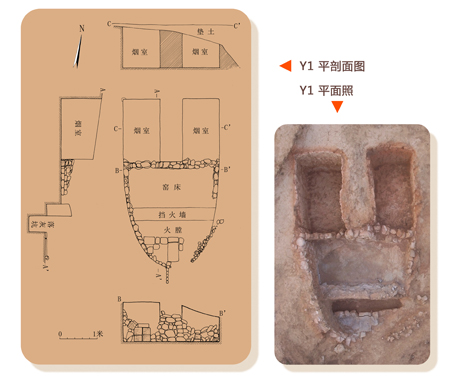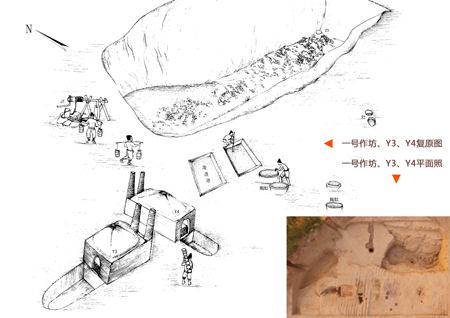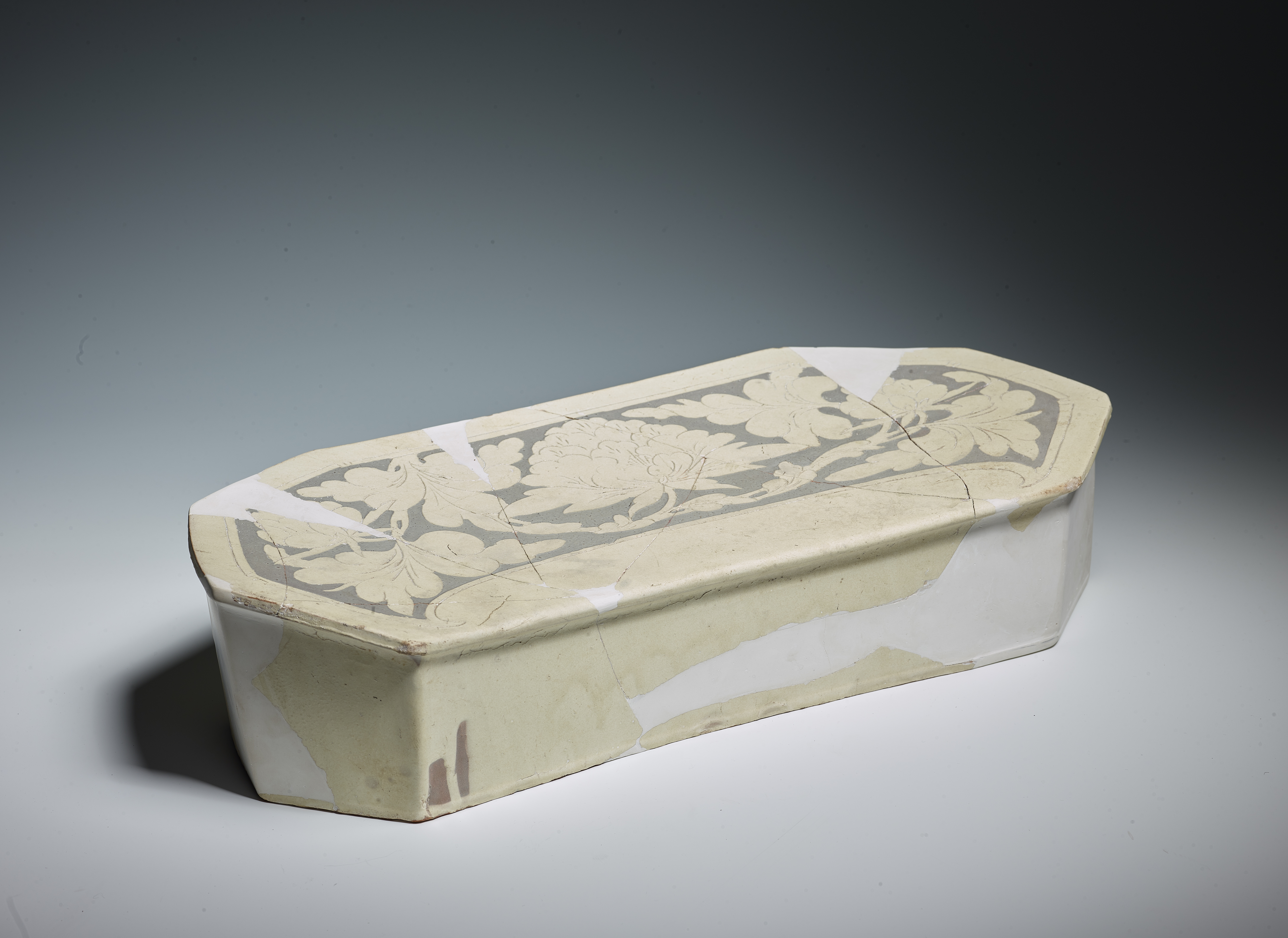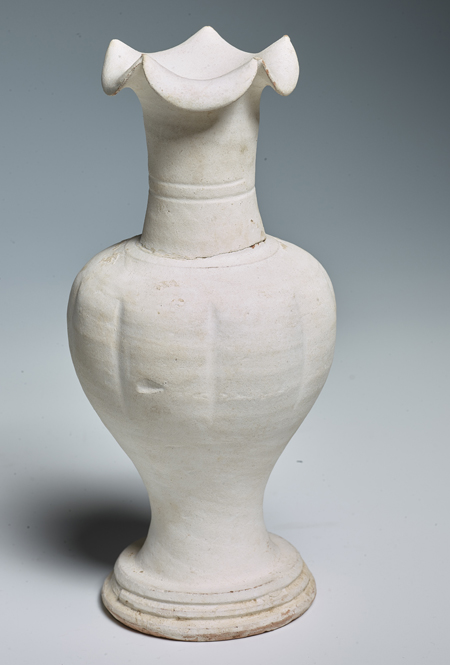Porcelain kiln site from Song-Jin Dynasties found in Guzhen, Hejin, Shanxi
From:Chinese Archaeology NetWriter:Date:2017-04-17
Guzhen kiln site is located in Guzhen Village, Hejin City, Shanxi Province. From March to September 2016, salvage excavation of Guzhen kiln site was carried out jointly by Shanxi Provincial Institute of Archaeology and Cultural Heritage Administration of Hejin City. From this season, 4 porcelain workshops, 4 kiln furnaces, 1 well and 35 ash pits were cleared. 1326 pieces of complete or recoverable porcelain artifacts were unearthed. More than 6 tons of porcelain pieces and kiln furniture sample were collected, too. Besides, in the northern part of the kiln site, there was an enriched porcelain clay mine.

No.1 workshop and the reconstruction Drawing of kiln Y3,Y4
The first discovery of porcelain workshops and kiln furnaces in Shanxi
The discovery of porcelain workshops and kiln furnaces are the most significant achievements in the excavation. From the layout of the kiln site, we can see that workshops were situated closely next to kiln furnaces. Each workshop was associated with one or two furnaces. Workshops were usually cave-dwellings, among which, No.2 workshop was cave dwellings with a cellar courtyard, which had distinctly indigenous characteristics. There was clear division of works between workshops. Considering that there were elutriation pools and pottery jars in No.1 workshop, it is predicted to be a pugging place. While stone querns, porcelain clay heaps and large areas of burnt surfaces were found in No.2 workshop, which indicate it was probably a place for making and airing greenware. No.4 workshop should be a place to store kiln furniture as neatly placed saggers and supporting bo saggers were found at its bottom.

White glazed octagonal peony pattern ceramic pillow
Rich porcelain categories and exquisite decorating techniques
Porcelain vessels produced from Guzhen kiln site include coarse white porcelain, fine white porcelain, black-brown glazed porcelain and tri-colored glazed porcelains produced with low temperatures. Among them, white porcelain is the mainstream. Porcelain shapes contain bowls, plates, bo-bowls, basins, pillows, vases, small cups, mortars and so on. Decorating techniques include carved design on black ground, black design painted on white ground as well as incised design and impressed design on small bead-pattern ground. Poetry, designs of flowers and herbs are the main subjects. Fine white porcelains from Northern Song Dynasty and decorated porcelain pillows are the best representatives of technological level and characteristics of the kiln site.

Unglazed flask porcelain with flower mouth
Significances
The excavation and important discovery of Guzhen kiln site was a significant breakthrough of ceramic archaeology in Shanxi and even the whole country. As the first discovery of porcelain production remains in Shanxi, such as workshops, kiln furnaces and so on, it fills the blank of porcelain production related features in Shanxi. The complete porcelain production industry provides rich materials for research on ancient porcelain production techniques in North China.
Y1 is a kiln furnace from Northern Song Dynasty whose smoke chamber took more than half of the whole furnace. Its unique structure is the first discovery found nationwide. The kiln furnace probably utilized key technology of airing greenware and firing saggers with residual heats of furnaces. It gives new materials for research on history of porcelain production engineering.
Sharp contrast between simple but elegant porcelains from Northern Song Dynasty and colorful ones from Jin Dynasty reveals abrupt change of porcelain production during transition of Northern Song and Jin Dynasty, which will shed new light on research of ceramic archaeology and aesthetics.
Fine white porcelain artifacts from Northern Song Dynasty have translucent, smooth and evenly glazed surfaces and highly density bodies. According to results of tests, relatively low level of combustion improver and high sintering indicate that firing temperature of this kind of porcelain could be extremely high. Besides, less than 1% of iron and titanium impurities made them even whiter than white porcelains from Xing Kiln and Ding Kiln. Porcelain pillows from Jin Dynasty have so unique shapes and decorations that the excavation of Guzhen kiln site identifies production kiln of this particular kind of porcelain pillows. (Translator: Ma Huanhuan)

